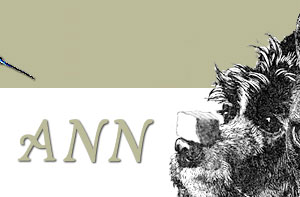|
Guinea pigs are hardy and affectionate and make great companions. However, people often think of them as "low-maintenance" pets, when in reality, they require a lot of care and attention. Guinea pigs can be quite vocal and will often greet you with whistles and shrieks.
Home Sweet Home
Your guinea pig's cage should be at least 28 inches long by 24 inches wide by 14 inches high. You should increase the floor area by two square feet for each additional guinea pig. A cage with a raised small-mesh floor and removable tray is the easiest to keep clean. Be sure to provide a thin board so your guinea pig can get off the wire mesh. You'll also want to provide your guinea pig with a cardboard or wooden "house," tunnels to crawl through and platforms to climb on.
When choosing floor linings and cage furnishings, keep in mind that guinea pigs will chew on just about anything, so everything placed in the cage must be nontoxic. Use plenty of lining material like shredded newspaper, high-quality hay or commercial nesting materials available at pet-supply stores. Don't use materials such as sawdust or cedar chips as they may cause respiratory or other health problems.
To provide your guinea pig with a clean environment, be sure to clean its cage at least three to four times a week.
Chow Time
Commercial guinea pig food enriched with vitamin C will provide your guinea pig with a balanced diet and is available at pet supply stores. You can supplement your guinea pig's diet with fresh foods like carrots, any kind of fruit, dark green lettuce, cucumbers, dark green vegetables, potatoes, sprouts, uncooked rolled oats and corn. Introduce new foods slowly and in small amounts to reduce the risk of diarrhea. Use a heavy crockery bowl that can't be tipped over and is easy to clean.
A salt lick is recommended to prevent mineral deficiencies. Hang it from the side of the cage to prevent contamination. Keep fresh water available in a suspended "licker" water bottle at all times.
Health Matters
A well-cared-for guinea pig may live four to seven years. Male guinea pigs can weigh between two to four pounds, females slightly less. Guinea pigs are sexually mature between five and eight weeks of age.
Guinea pigs groom themselves with their front teeth, tongue and back claws, but they still require frequent brushing and combing to stay clean and tangle free, particularly the long-haired breeds. Use a soft baby brush or toothbrush.
Because your guinea pig's teeth grow continuously, it's essential that you provide it with hard things to gnaw on to prevent its teeth from growing too long. Hard wood, untreated wicker and hard bread crusts are some suggested items. It's also possible for your guinea pig's nails to overgrow, causing discomfort and increasing your risk of being scratched. Ask your veterinarian to show you how to trim your guinea pig's nails.
Handling with Care
Guinea pigs are easily stressed and require careful handling. Always let your guinea pig know you're there by allowing it to sniff your hand. To pick up your guinea pig, slowly place one hand under its chest, just behind the front legs, and gently cup your other hand under its hindquarters. Once you have a firm but gentle grip, lift it up and immediately pull it close to your chest or lap so it doesn't thrash around. Guinea pigs feel most secure when they're held close to your body and when their feet are supported. Since guinea pigs aren't very agile, a fall could result in serious injury.
Guinea pigs love to have their heads scratched and will frequently make a "chattering" sound similar to a cat's purr to show their appreciation. The more you handle your guinea pig, the friendlier and tamer it will be.
Behavior Bits
Guinea pigs are social creatures and enjoy the company of other animals, especially other guinea pigs. Males generally don't get along, however, unless they're neutered. Two females will usually do fine together, as will a male and female. Be sure to have the male neutered, otherwise you'll soon have unwanted litters.
Guinea pigs have a keen sense of sight. They also have the ability to recognize all the colors of the spectrum. Their hearing is even better than their vision, and they can quickly learn to respond to a specific sound. Guinea pigs don't use their claws to carry food to their mouth, but put their front feet on the food to hold it still. Young guinea pigs love to jump, so you might want to build them a little obstacle course for exercise.
Resources
- Bielfeld, Horst. Guinea Pigs: A Complete Pet Owner's Manual. Barron Book Series. New York.
- Willkie, Tom. A Beginner's Guide to Guinea Pigs. T.F.H. Publications.
© 2003 reprinted with permission from The Denver Dumb Friends League | 

